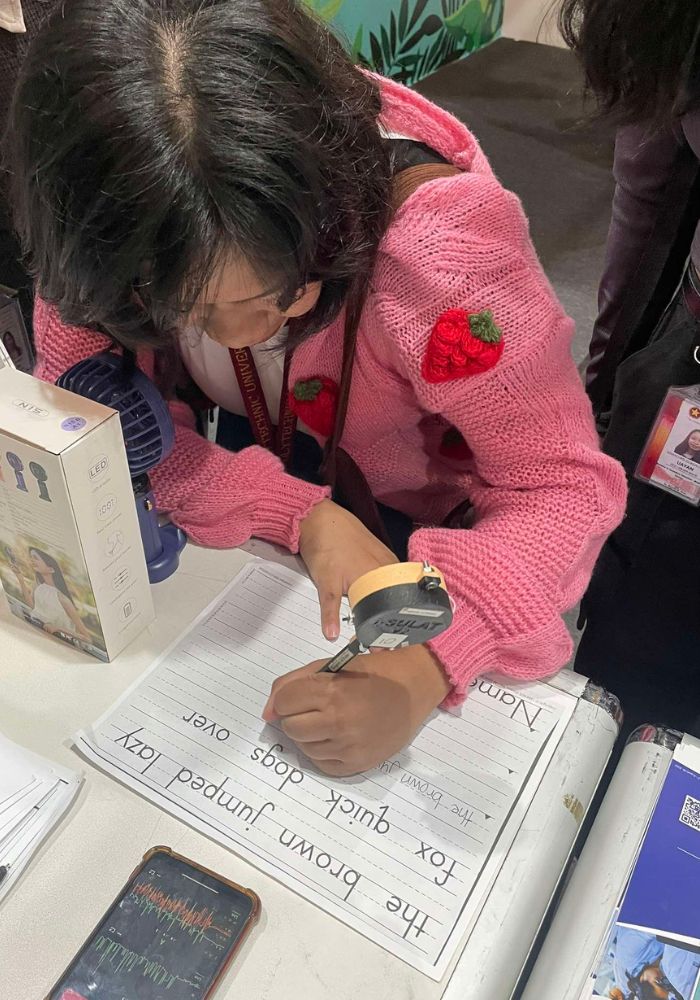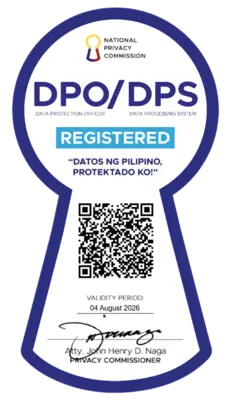Experts at the University of Santo Tomas are developing an AI pen that can help detect possible neurodevelopmental disorders

A group of experts in the University of Santo Tomas has developed an AI pen in the hopes of helping detect possible neurodevelopmental disorders.
A collaboration between the university's Faculty of Engineering and College of Rehabilitation Sciences, the Intelligent Stroke Utilization, Learning, Assessment and Testing (iSulat) is a sensor pen that gathers information that can help aid “in evaluating the health of different students."
As they continue to develop the technology, occupational therapy professor Ivan Gomez, one of the people behind the inception of iSulat, hopes that the technology can help them detect "red flags" and immediately screen children and possibly give them early intervention if they are diagnosed.
"That's why it might be something in the long run worth exploring whether handwriting red flags could possibly screen for children that might be at risk not only for handwriting difficulties but for other neurodevelopmental disorders," occupational therapist Ivan Gomez said.
Work in ProgressThe iSulat technology has different sensors that could detect different handwriting patterns, or handwriting signals that they call handwriting features.
“If you provide handwriting exercises, for example, something that might include the pen, the smart pen that we have developed, can at a very early point in time, identify those children that might be at risk,” Gomez said.
A child will write using manuals recommended by clinicians and the team collates the data and computes the handwriting features.
Among the recommended manuals include Minnesota Handwriting Assessment, Evaluation Tool for Children's Handwriting, and the Test of Visual Motor Skills.
They are common tools that are used for children, typically developing children and children with developmental disabilities, to identify whether they have handwriting problems.
"So, children in the spectrum or children who have been diagnosed with ADHD will most likely show distinctive patterns of handwriting difficulties. And this could stem from poor motor planning and coordination, some variability in terms of how they hold and how they press the pencil against the paper," the expert said.
"As well as the rhythm they have when they write, some inconsistencies spacing between letters and between words, how letters or numbers are aligned on the paper, as well as some behavioral problems seen among this particular group of children in terms of their impulsivity as well as their inattention affecting their written output," he added.
According to Gomez, there are currently two ways in evaluating a child through their handwriting.
One is the standardized handwriting assessments, which are inaccessible due to the lack of occupational therapists in the country and the high costs of its services.
Meanwhile, checking handwriting samples in schools is "not always standardized and it's always prone to some form of bias depending on who is trying to look at it," he added.
Gomez stressed that screening is still the "first line of defense" to diagnose a child if they could have neurodevelopmental disorders.
What's NextThe iSulat project is at the stage of diversifying their database for typically developing children and with neurodevelopmental disorders.
“Given where we are right now in terms of the development of the pen, there is still some work to be done. We need to have large-scale studies comparing the smart pen data, specifically with confirmed diagnosis. For example, with what you mentioned, children with ADHD and children on the autism spectrum,” Gomez said.
With the AI pen, they hope to help people especially in rural communities to address issues of neurodevelopmental disorders immediately.
“We also need to be able to find that specific pattern recognition through AI or machine learning to detect symptom clusters. And of course, to validate studies in diverse settings, not only in urban settings, but also in the rural settings,” the expert said.
“So, you could just imagine if you have one pen that could be used by an entire school in a rural area, it can serve all of those children having just one or two pens and can identify who among these children are screened to have handwriting difficulties,” he added.
Gomez stressed how early intervention works and will help in addressing neurodevelopmental disorders.
“What we know from research evidence is that early intervention works. So, the earlier that we detect, the earlier that we screen, the earlier that we refer to a specialist, it could be a developmental pediatrician, it could be an occupational therapist, the better the outcomes. It might be handwriting, it might be another thing, but for our team, we're looking at handwriting as a window to a child's development,” the expert said.
“And if we could catch these red flags at an early point in time, we can now provide solutions, provide interventions, provide occupational therapy assessments and interventions for these children,” he added.
“And we know that handwriting is also important for developing the ability to spell and the ability to read. So, if we could address that earlier in their development, then we can support their ability to participate meaningfully and successfully in schools.” — LA, GMA Integrated News




